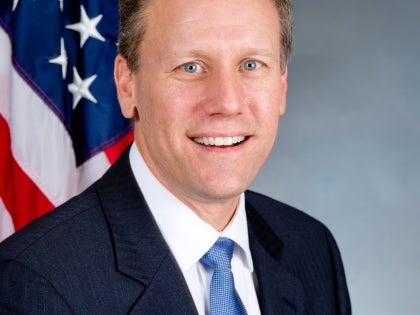
Senator Valesky Opens Historic Rehabilitation Tax Credit Workshop
David J. Valesky
September 24, 2009
SYRACUSE, N.Y.—State Senator David J. Valesky (D-Oneida) delivered opening remarks at a workshop that provided details about application of the Historic Rehabilitation Tax Credit, a law sponsored by Senator Valesky.
The workshop, sponsored by the Metropolitan Development Association, Preservation League, New York State Historic Preservation Office, and the New York State Urban Council, drew more than 100 people, including developers, homeowners, economic development professionals, municipal leaders and real estate agents.
“This workshop is important because it gives developers and homeowners concrete details about what steps to take to reap the benefits of the Historic Rehabilitation Tax Credit,” Senator Valesky, Vice President Pro-Tempore of the State Senate, said. “I expect that in a year or so, we can tour the city and point to dozens of properties, streets and neighborhoods that have seen vast improvement as a result of this program.”
The tax credit will provide incentive for developers to undertake projects that repurpose historic structures in distressed communities, including much of Upstate’s urban cores. In the past generation, commercial and residential growth has shifted away from cities and villages, creating vacant, underutilized and deteriorating areas, making it difficult to attract and retain new investment, new businesses and new residents.
The rejuvenation the program will promote has the potential to drastically and broadly change the Upstate economy, helping to reverse the population change and encouraging growth that will decrease the strain on property taxpayers.
The HRTC strengthens the state’s program first launched in 2006 and will make New York State more competitive against the nearly 30 other states with similar programs which have seen significant economic stimulus as a result, leveraging $3 to $5 dollars for every state dollar invested.
Specifics of the program include:
- Increasing the cap on commercial credit value from $100,000 to $5 million; the residential credit value will increase from $25,000 to $50,000.
- Limiting the availability of the residential and commercial credit of the program to “distressed” areas, which is defined as being located within a Census tract identified at or below one hundred percent of the median family income.
- Increasing the percent of qualified rehabilitation costs that can be claimed for the credit from 6 percent to 20 percent, allowing for a higher percentage of qualified rehabilitation costs.
- Making the credit assignable, transferable, and conveyable within business partnerships, to allow for greater flexibility on the part of the investor, and attract out-of-state financing to in-state rehabilitation projects.
- Offering the rehabilitation tax credit as a rebate to make the program a stronger financial incentive for homeowners without significant income tax liability.
##